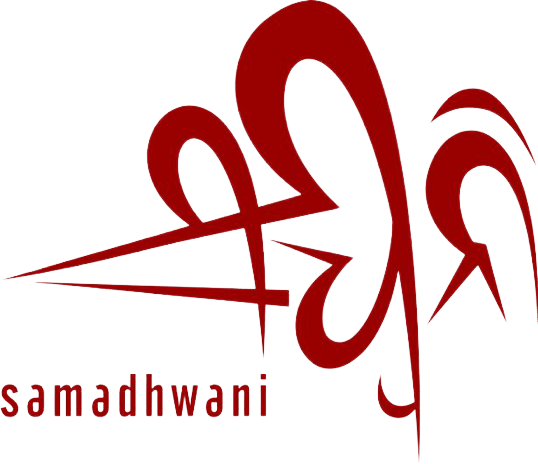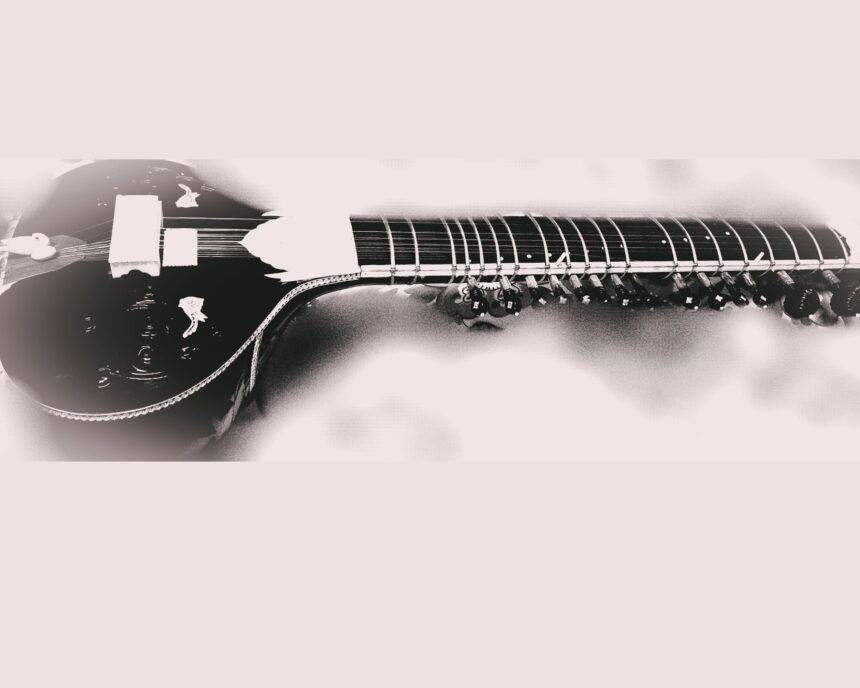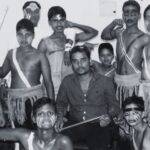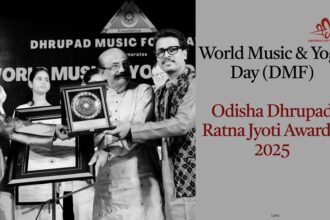Pandit Kashinath Mukharjee, fondly known as Kashi Jethu, was a towering figure in the world of Sitar Music, particularly revered within the rich tradition of Etawa. My encounters with him, although limited to just a few occasions, left a lasting impression. The intricate melodies he conjured from his sitar seemed to transcend the boundaries of mere notes, creating an immersive experience that lingered in the hearts of those fortunate enough to witness his performances. Musical journeys of Kashi Jethu’s are woven through the anecdotes shared by my close companions with a few of his disciples who are close to me. Their narratives painted a vivid portrait of a maestro whose artistry extended beyond the strings of his instrument. It encapsulated a profound understanding of the cultural and spiritual dimensions embedded in the Etawa tradition. As I reflect on this day, the 28th of October, I am reminded that it marks the anniversary of Kashi Jethu’s departure from this world. It is a day when the musical community pays homage to the legacy he left behind—a legacy that resonates not only in the haunting echoes of his compositions but also in the memories shared by those who were touched by his presence. The Etawa tradition, with all its nuances and intricacies, found a stalwart in Pandit Kashinath Mukharjee, and his impact continues to ripple through the fabric of Sitar Music, shaping the aspirations of aspiring musicians and aficionados alike.
The legacy of Pandit Kashinath Mukharjee finds an eloquent voice in the blogs penned by Sri Ramaprapanna Bhattacharya, a distinguished disciple of the maestro’s musical tradition. Through the words of Bhattacharya, a narrative unfolds that not only chronicles the technical intricacies of Sitar playing but also delves into the profound philosophy that underlined Panditji’s approach to music. In the digital realm curated by Bhattacharya, readers are treated to a virtual journey through the corridors of Etawa tradition, guided by the wisdom imparted by his revered guru. The blogs serve as a repository of insights, anecdotes, and reflections, offering a glimpse into the intimate disciple-teacher relationship that often goes beyond the realms of formal training. From the meticulous details of Sitar techniques to the esoteric aspects of musical interpretation, Sri Ramaprapanna Bhattacharya’s writings become a bridge connecting enthusiasts and scholars to the essence of Pandit Kashinath Mukharjee’s musical philosophy. It is through these narratives that the living spirit of the maestro continues to resonate, influencing and inspiring generations of musicians who seek to unravel the mysteries embedded in the Etawa tradition. As readers embark on this literary exploration, they not only gain a deeper appreciation for the artistry of Pandit Kashinath Mukharjee but also witness the torchbearer role assumed by his devoted disciple, Sri Ramaprapanna Bhattacharya, in preserving and propagating the profound musical heritage they both hold dear.
Embarking on his musical journey, Pandit Kashinath Mukharjee initially discovered the sitar, captivated by its melodic allure long before formal training commenced. His formative years, however, unfolded under the tutelage of Srinivas Nag, a disciple of the esteemed Ustad Enayet Khan. For twelve years, the intricate nuances of the sitar were revealed to him through this dedicated apprenticeship. Following the passing of Srinivas Nag, Pandit Kashinath Mukharjee found himself under the guidance of none other than the legendary Ustad Vilayat Khan, a luminary in the realm of sitar music. During this phase, as per the directive of his Ustad, he withdrew from public performances, dedicating himself wholeheartedly to the refinement of his art. His musical influences extended beyond the strings of the sitar. Pandit Kashinath Mukharjee cultivated a profound understanding of music through close associations with luminaries such as Ustad Bade Ghulam Ali Khan and Ustad Keramat Ullah Khan. These interactions enriched his musical perspective, leaving an indelible mark on his own artistic expression. In a testament to his versatility, Pandit Kashinath Mukharjee’s musical evolution took an intriguing turn as he delved into the vocal realms, drawing inspiration from the acclaimed Ustad Amir Khan. Under Ustad Amir Khan’s guidance, he honed his vocal prowess until the untimely demise of his revered mentor. This eclectic journey, marked by diverse influences and dedicated mentorship, laid the foundation for Pandit Kashinath Mukharjee’s distinctive musical identity.
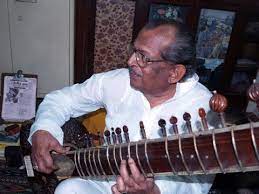
Pandit Kashinath Mukherjee’s music at its core lies the Imdadkhani-Etawah Gharana, with Mukherjee skillfully incorporating its stylistic innovations and profound compositions into his own repertoire. This foundation provides a solid framework for his artistic expression. The spiritual depth and intricate taan patterns associated with Ustad Amir Khan’s musical legacy are prominent in Mukherjee’s performances. His exploration of these elements adds layers of complexity and a profound spiritual dimension to his music, showcasing a dedication to the nuances of Khan’s vocal style. Simultaneously, Mukherjee embraces the soulfulness, romanticism, and dazzling brilliance epitomized by Ustad Bade Ghulam Ali Khan. These facets contribute a unique flavor to his art, infusing it with emotive depth, romantic sensibility, and a captivating brilliance that captivates audiences.
Pandit Kashinath Mukharjee’s pedagogy, as elucidated by Sri Abhik Mukharjee, revolves around a profound principle, absolute awareness in musical expression. Whether improvising in the moment or rendering a pre-composed piece, the emphasis is on a thorough understanding of every note played. Mukharjee’s teaching underscores the significance of grasping the logical reasoning behind each musical creation, fostering a deep connection between the artist and their craft.The foundation of this approach lies in maintaining a constant awareness of the beats while playing a bandish. Mukharjee instilled the importance of internalizing the rhythm, ensuring that the musician is in sync with the pulse of the composition. Within this rhythmic framework, the execution of taans is a meticulous process. Mukharjee stressed that each taan should not only be melodious but also possess a sense of completeness—a musical quest that demands precision and artistry. Central to Mukharjee’s guidance is the encouragement for his disciples to discover their unique voices through their instruments. He urged them to embark on a personal journey of musical self-discovery, emphasizing the development of an individual style. In doing so, he believed that true success as a musician lies in the authentic expression of one’s musical identity. In essence, Pandit Kashinath Mukharjee’s teaching philosophy transcends the mere technicalities of playing an instrument. It is a holistic approach that intertwines musical theory, rhythmic consciousness, and the pursuit of individual artistic voice,a quest that echoes in the hearts and melodies of his disciples.
To Conclude with Pandit Kashinath Mukherjee’s musical journey becomes a harmonious convergence of diverse influences, creating a rich and nuanced expression that transcends the boundaries of a single tradition. His ability to seamlessly integrate elements from Imdadkhani-Etawah Gharana, Ustad Amir Khan, and Ustad Bade Ghulam Ali Khan showcases not only his technical prowess but also his deep appreciation for the diverse facets of classical music. It’s a testament to his artistry, where each note becomes a reflection of the intricate interplay between tradition, innovation, and personal expression.
